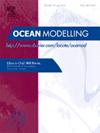Machine Learning Approaches for Early Warning of Tsunami Induced by Volcano Flank Collapse and Implication for Future Risk Management: Case of Anak Krakatau
IF 3.1
3区 地球科学
Q2 METEOROLOGY & ATMOSPHERIC SCIENCES
引用次数: 0
Abstract
A tsunami triggered by volcanic collapse is a low-probability but high-impact event. Unlike tsunamis triggered by earthquakes which the mechanism is well understood, volcanic tsunami events have complex trigger mechanisms and occur with little to no warning such as the event in December 2018 of the Anak Krakatau volcano tsunami, making it more difficult to detect and issue a warning. We adopted collapse tsunami machine learning (ML) approach model which does not require source information, to predict maximum tsunami amplitude on four coastal stations. Observations from six synthetic observation stations around Anak Krakatau volcano were used as input for collapse tsunami ML. The 320 collapse scenarios triggering tsunamis with various parameters and directions were generated to train model. To evaluate the accuracy and reliability of the tsunami simulations, we conducted a comparison between the simulated waveforms and those recorded at four coastal stations during the December 2018 event. The RMSE values between predicted and actual (via forward tsunami) of Random Forest model consistently provide the most accurate predictions ranging from 0.0586 to 0.1945 across three out of the four stations. We also applied deep learning algorithms, LSTM, and Complex LSTM to predict tsunami full waveform by using short-duration observation as input. Furthermore, we also pointed out the potential of risk management that can be explored and integrated from results of the maximum tsunami amplitude and arrival time predictions for support decision-making. We suggest that the ML approach could be a good alternative for volcanic tsunamis early warning purposes.
火山侧翼崩塌引发海啸预警的机器学习方法及其对未来风险管理的启示——以喀拉喀托火山为例
火山崩塌引发的海啸是一种低概率但高影响的事件。与机制众所周知的地震引发的海啸不同,火山海啸事件的触发机制复杂,发生时几乎没有预警,例如2018年12月的喀拉喀托火山海啸,这使得发现和发出预警变得更加困难。采用不需要源信息的崩塌海啸机器学习方法模型,对四个沿海台站的最大海啸振幅进行了预测。以Anak Krakatau火山周围6个综合观测站的观测数据作为塌陷海啸ML的输入,生成320个不同参数和方向的引发海啸的塌陷情景,训练模型。为了评估海啸模拟的准确性和可靠性,我们将模拟波形与2018年12月海啸期间四个沿海站记录的波形进行了比较。随机森林模型预测与实际(通过正向海啸)之间的RMSE值在0.0586 ~ 0.1945之间,在4个站点中有3个站点的预测结果一致。我们还应用深度学习算法、LSTM和复杂LSTM,通过短时间观测作为输入来预测海啸的全波形。此外,我们还指出,可以从最大海啸振幅和到达时间预测的结果中探索和整合风险管理的潜力,以支持决策。我们认为机器学习方法可能是火山海啸预警的一个很好的选择。
本文章由计算机程序翻译,如有差异,请以英文原文为准。
求助全文
约1分钟内获得全文
求助全文
来源期刊

Ocean Modelling
地学-海洋学
CiteScore
5.50
自引率
9.40%
发文量
86
审稿时长
19.6 weeks
期刊介绍:
The main objective of Ocean Modelling is to provide rapid communication between those interested in ocean modelling, whether through direct observation, or through analytical, numerical or laboratory models, and including interactions between physical and biogeochemical or biological phenomena. Because of the intimate links between ocean and atmosphere, involvement of scientists interested in influences of either medium on the other is welcome. The journal has a wide scope and includes ocean-atmosphere interaction in various forms as well as pure ocean results. In addition to primary peer-reviewed papers, the journal provides review papers, preliminary communications, and discussions.
 求助内容:
求助内容: 应助结果提醒方式:
应助结果提醒方式:


